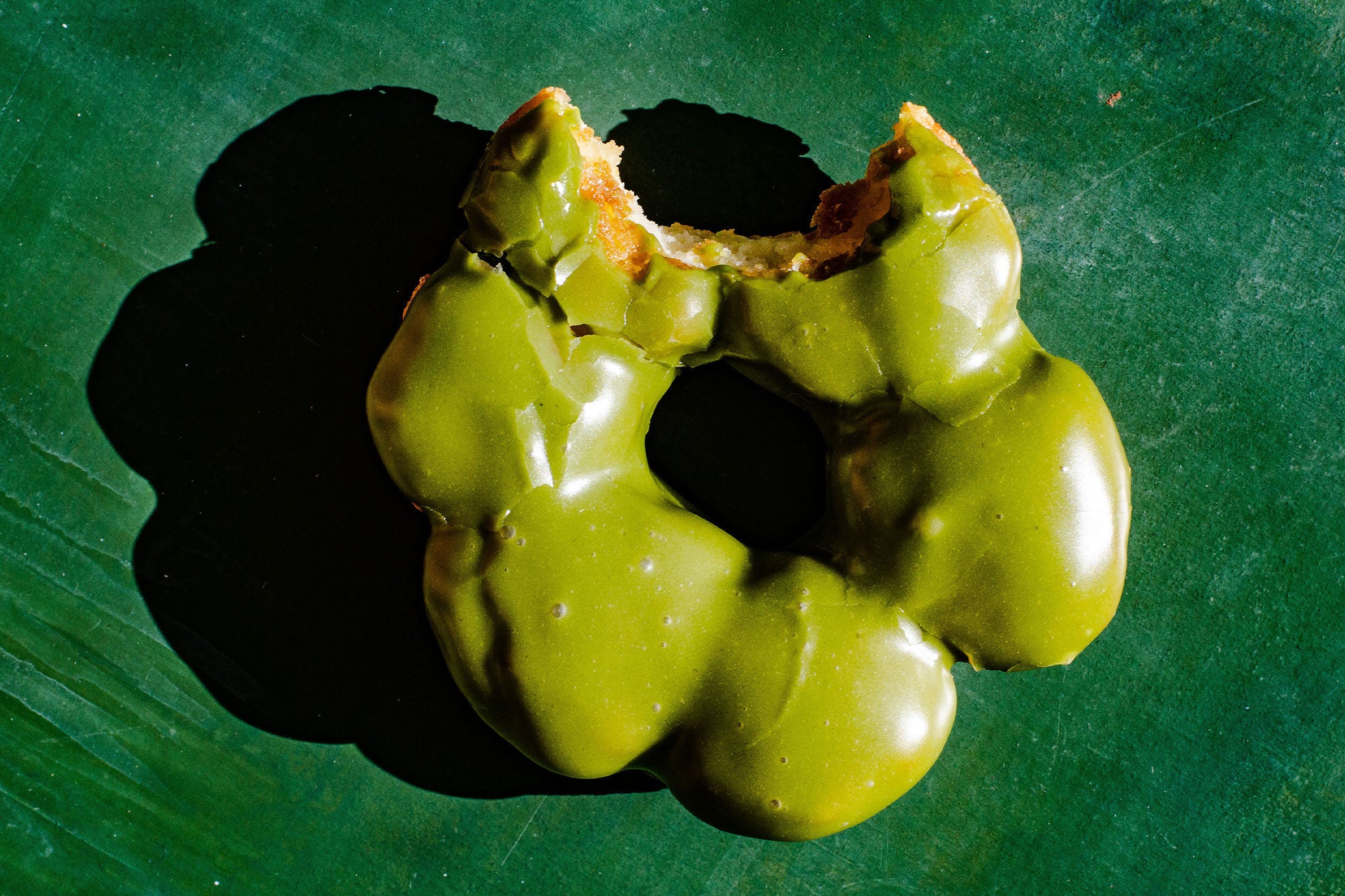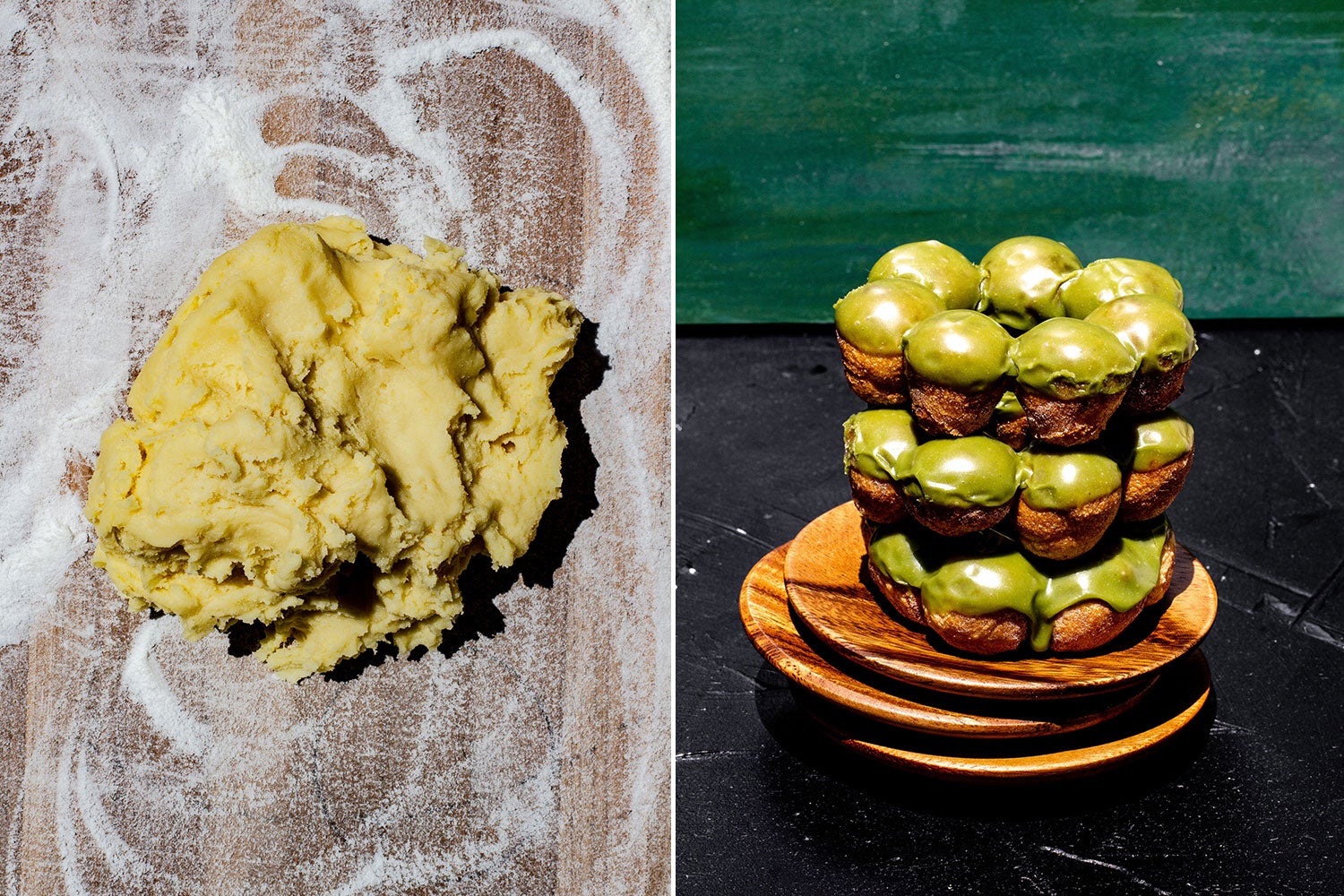
Forget cake doughnuts and yeast doughnuts. Mochi doughnuts add some bounce to your bite.
The doughnut debate often pits cake against yeast. The airy, slightly bready insides of a glazed yeast doughnut welcome oozy fillings of cream and jelly, while a cake doughnut’s crisp outer layer encases a sweet, dense crumb inside. But the underdog, mochi doughnuts, have a trademark delicate chew unlike anything you’ll find at Krispy Kreme or Dunkin’ Donuts.
The successful formula lies in the flour. Specifically, glutinous rice flour—the type that gives butter mochi and sticky rice cakes like nian gao their classic bounce. It works the same with doughnuts, that tender chewiness working in tandem with the dough’s light airiness. Mister Donut, Japan’s largest doughnut chain, sells similarly springy-textured doughnuts most recognizably in the form of pon de rings—a connected wreath of dough balls—but adds tapioca flour (the main ingredient of boba) instead of glutinous rice flour.
Mandy Lee, who developed a sugar-glazed mochi doughnut recipe for her blog Lady and Pups, explains her creation, which we have adapted below. “I wanted something similar in texture, but much easier and more home-kitchen-friendly.” The most ubiquitous green-labeled bag from Erawan is easily found at Asian markets for one or two dollars.
“Many describe mochi as ‘chewy.’ They are not wrong, for that’s the closest English vocabulary that remotely resembles mochi. But it’s different from say, a bagel, whereas mochi’s unique ‘chewiness’ is very supple, malleable, and stretchy, with a mouthfeel that remains slippery and silky,” Lee explains.
So are these doughnuts difficult to make? Hardly. Lee points out how the mixed dough is ready to be rolled out and then fried on the spot, unlike other styles that require rest—either for the dough to double in size or to firm up in the refrigerator.
At Alimama, a New York bakery specializing in mochi doughnuts glazed with yuzu- and taro-stained interiors, owner Janie Wang emphasizes they’re best made fresh throughout the day to keep their fluffiness and elasticity intact. She stresses that the dough’s texture should be soft and tacky, like a marshmallow, to hit the sweet spot of light chewiness. Likewise, Lee recommends that the dough should be “almost too soft to handle” to avoid a mouthful of dense mush. Both Wang and Lee’s recipes involve a precooked starter dough (which can be popped in the microwave for a minute) made of glutinous rice flour and milk—necessary for the dough to bind smoothly when the remaining flour, sugar, butter, baking powder, and eggs are added for the final spin in a stand mixer.
Once thoroughly mixed, they can be shaped to your own liking, whether that involves rolling out the dough flat to cut out rings or molding them into bite-size balls. For this recipe, I re-created Mister Donut’s signature pon de rings style—partially for aesthetics, but more because I don’t have a doughnut mold.
Once fried for three or so minutes to a pleasantly golden brown, the doughnut itself acts as a blank canvas. It can carry a glaze of any flavor (I’m partial to matcha) and could benefit from a few crunchy toppings (Wang showers some in cereal bits, but coconut flakes, sesame seeds, and chocolate shavings are also fair game). Just remember that the doughnut is the real star of the show—in all of its bouncy, chewy grandeur.

